by Lance Hill | Jul 17, 2022 | How To, Mirliton
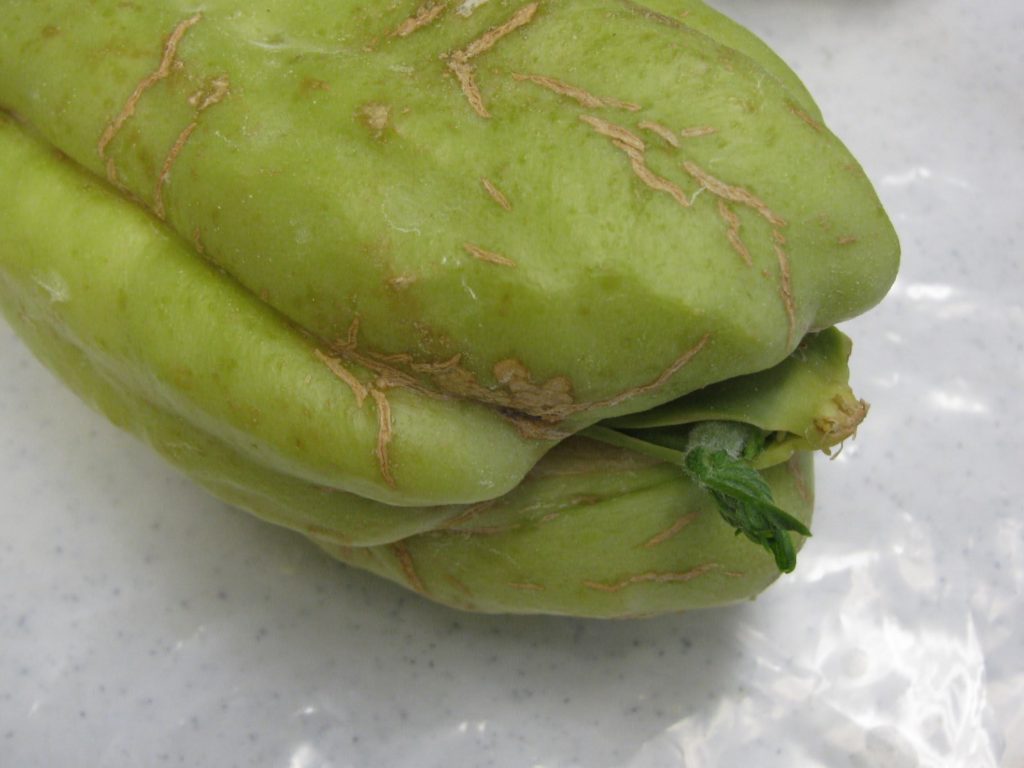
Sprouting mirliton.
We occasionally get a Spring mirliton crop and decide to gift or sell them to others to grow. You could plant them in small containers and sell them that way, but that would mean that potential growers would have to transplant them into the ground during the full heat of the summer. That would be risky. That’s why we recommend that growers sell their fruit as sprouts as soon as possible after picking them. Sprouts can be safely planted in May-June with a simple shade technique (click here). So how do you expedite sprouting?
Mirlitons sprout (germinate) in response to warm weather. Joseph Boudreaux taught me the simple technique for incubating mirlitons in May: Place them in a warm place outside and they’ll sprout within 10-14 days. It’s best to place them away from the direct sun and inside a container such as a milk crate where varmints can’t get them (squirrels, possums, and rats). As soon as they begin to sprout, you can assure people that they are viable seeds and ready to plant.
by Lance Hill | May 27, 2022 | How To, Mirliton
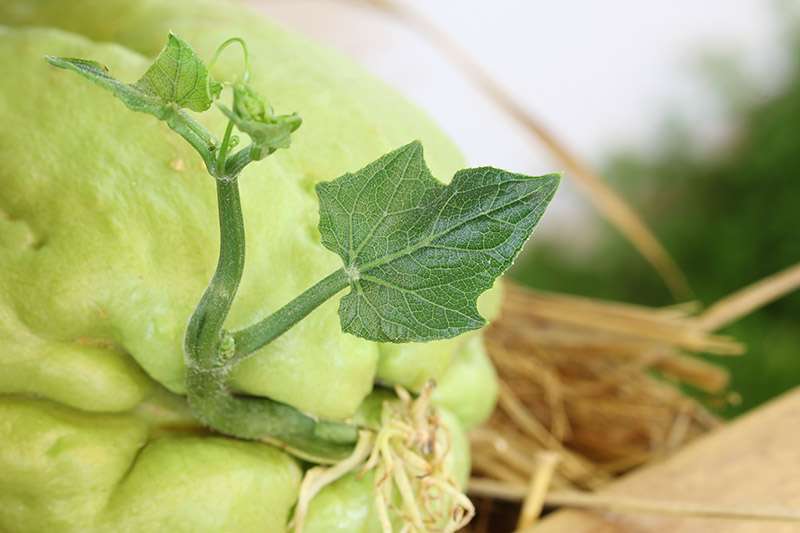
Spring mirlitons are normally sold unsprouted because they are picked fresh from the vine in early May. The first step before planting is to sprout the mirliton. You can speed the process by incubating it—keeping it as warm as possible. If it is above 80° outside, place the mirliton in a shaded area. Or you can incubate it inside your home by placing it in a small plastic trash can or 5-gallon container with a lamp or small heating pad on low. The ideal temperature is 80°-85°. This will promote rapid sprouting within 10-14 days. (here is how I did it)
As soon as the seed begins to emerge (sticks out its tongue), it needs to be planted—but differently from the fall ones. In May, temperatures can run in the 90s along the Gulf Coast, and I have found that sometimes they won’t send up a shoot in extreme heat. Instead, the shoot spirals under the seed. (Figure 1).
The solution is simple. Plant the sprout as you normally would, but put a temporary shade cover over it —a milk crate with a piece of shade cloth over it or a piece of cardboard on top will work fine. Cover the crate with chicken wire to ward off varmints. Once the shoot emerges, remove the crate and stake up the vine.
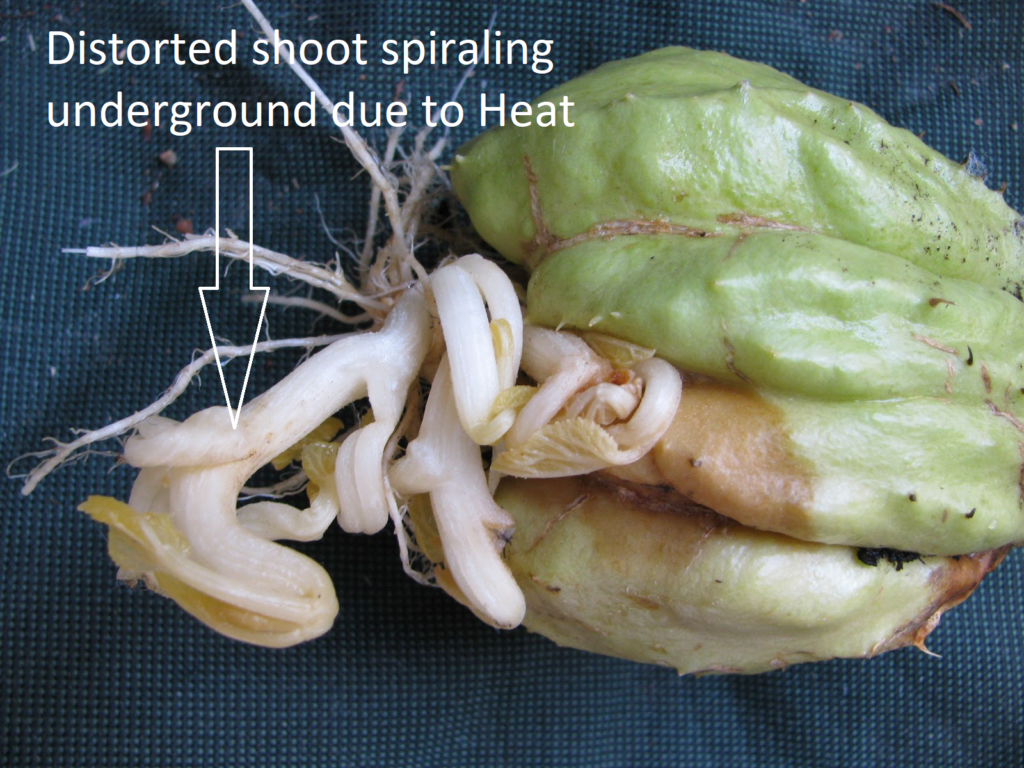
Figure 1.
by Lance Hill | Jan 8, 2021 | Mirliton

Chrissy and Ryan Rockefeller
Rockefeller Heirloom Mirliton Donated to Mirliton.Org
By Lance Hill
I am delighted to announce that Ryan and Chrissy Rockefeller of St. Rose, Louisiana have donated several sprouts to Mirliton.Org to propagate. This is a previously unseen dark green and slightly spiny variety.

Image 1. Rockefeller Heirloom Mirliton.
Chrissy Missios Rockefeller has been regularly posting about their mirliton vine on the Louisiana Edible Gardeners Facebook group. We were intrigued that it produced some dark green and spiny mirlitons. Similar varieties exist throughout the word, but Louisiana growers have favored pale green and smooth varieties. Somehow this variety survived. Mirliton.Org plans to carefully cultivate this variety to preserve and repopulate it. We have, as is our practice, named the variety after the family that had owned and preserved it for years.

Image 2. Rockefeller Heirloom Mirliton Vine growing in St. Rose.
People often ask us if different varietal colors and characteristics indicate differences in flavor. Imported mirlitons (chayote) have been selected for uniform color, size, and smoothness, all at the expense of flavor. We know that there are differences in flavor in Louisiana-grown heirlooms and plan to flavor- test the Rockefeller variety.

Image 3. Rockefeller Heirloom Mirliton sprouts.
If you are interested in growing the variety to provide it to aspiring growers, and if you have adequate trellis space and frost protection in place, please email me at lance@mirlton.org for an application.
Special thanks to Paul D’Anna for his help in securing this donation.
by Lance Hill | Nov 24, 2020 | Mirliton
Old Family Tradition of Mirliton Growing Flourishes in St. John Parish
By Renee Lapeyrolerie and Dr. Lance Hill
First, a little genealogy. In the 1970s, Joseph “Junior” Remondet started his first mirliton (chayote) vine in Reserve, St. John the Baptist Parish in Louisiana. Remondet’s uncle had handed down the old family variety that they had for generations. Junior shared it with his bother-in-law and next-door neighbor, Earl Perque, who bequeathed it to his son Paul Perque It’s a bit like the begats in the bible, but Louisiana mirliton growers believe in preserving family traditions.

Figure 1 Remondet-Perque Heirloom Mirliton
Mirlitons are in the Remondet-Perque family’s genes. The family has grown them for generations. Junior Remondet is a big, garrulous man with a thick Louisiana French accent. His uncle told him to plant two mirliton seeds in keeping with an old myth that you need a male and female plant; but it was good advice since it doubled his chances of success. The family heirloom mirliton is now primarily in the care of Paul Perque. The trellis 15′ X 10’ and is made of fence posts and covered on top with livestock panels (4”x4” mesh) and receives full sun.

Figure 2 Joseph ‘Junior’ Remondet, Paul Perque, and Ryan Remondet.

Figure 3 Paul Perque with his current vine, has yielded over 300 mirliton at publishing.
Paul Perque’s late mother, Sylvia, took careful notes of the harvest in the back of her address book. Her records include years of family and friends who would call and request mirliton for purchase by the dozen to make stuffed mirlitons. Miss Sylvia was a great cook, known for making pastries for the local church and school.

Figure 4 Sylvia Audiffred Perque’s family notebook of 2013 Mirliton Harvest.
Ryan fondly remembers helping his father tend to the mirliton trellis, running new wires across the top. Ryan is in the grocery produce business and recounts when a colleague from the West Coast visited him and was mystified by the enormous quantity of chayote coming into Louisiana since there were few of the Latino and Asian populations that valued the squash. Ryan told him the history of home growing mirlitons in Louisiana. For the coup de grace, he had his mother prepare his colleague some of the traditional shrimp-stuffed mirlitons.
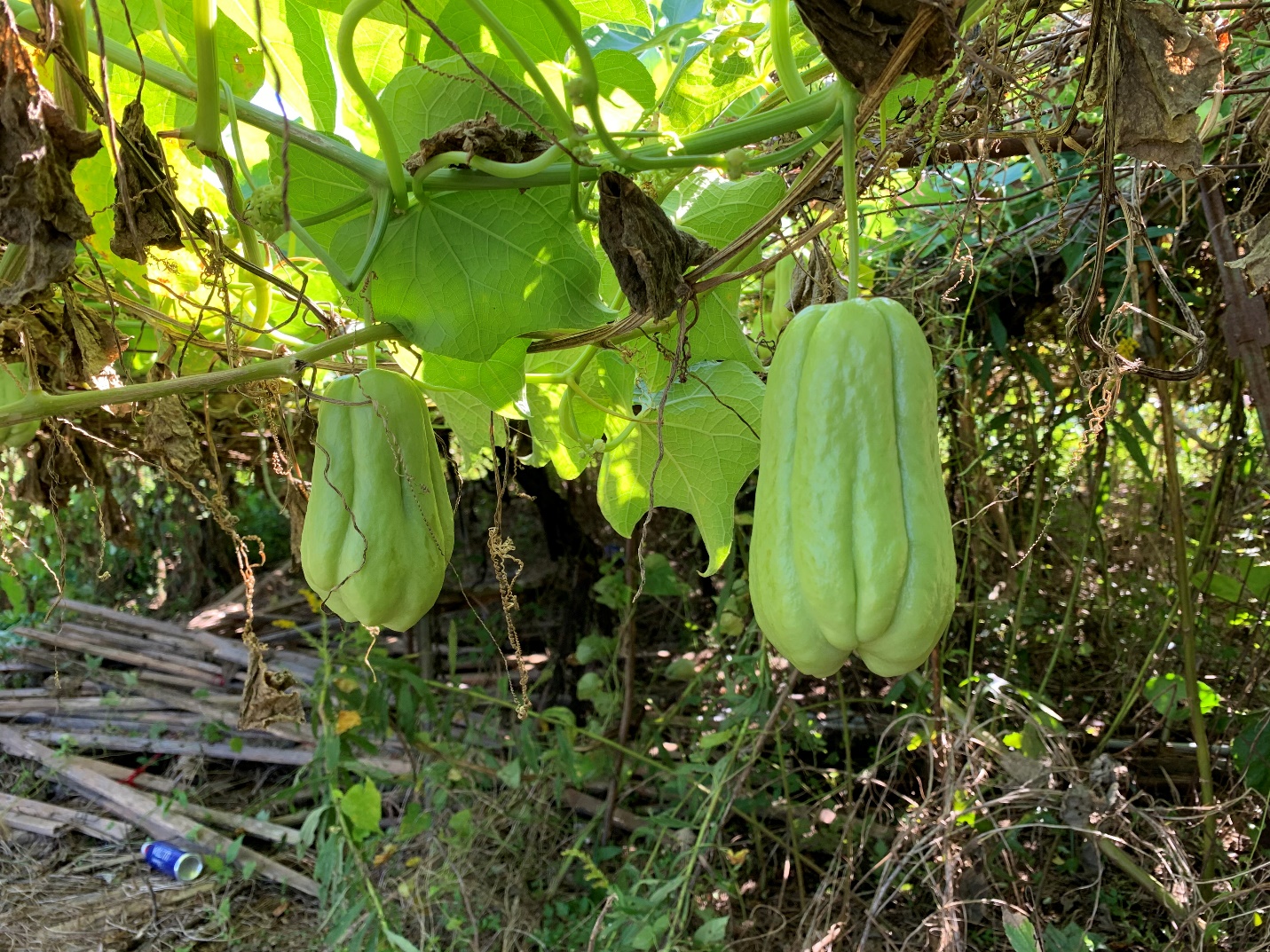
Figure 5
The vine is located at the end of the family lane and adjacent to a large drainage ditch alongside the Canadian North Railroad. Junior’s uncle had suggested that he plant near a water source such as this, and Paul credits the vine’s success to this location.
The vine has a traditional Louisiana overhead trellis (arbor) and access to an adjacent tree that it likes to climb. In 2019, an early frost—the first in over a century—killed the top of the vine but it recovered and regrew in the spring of 2020.
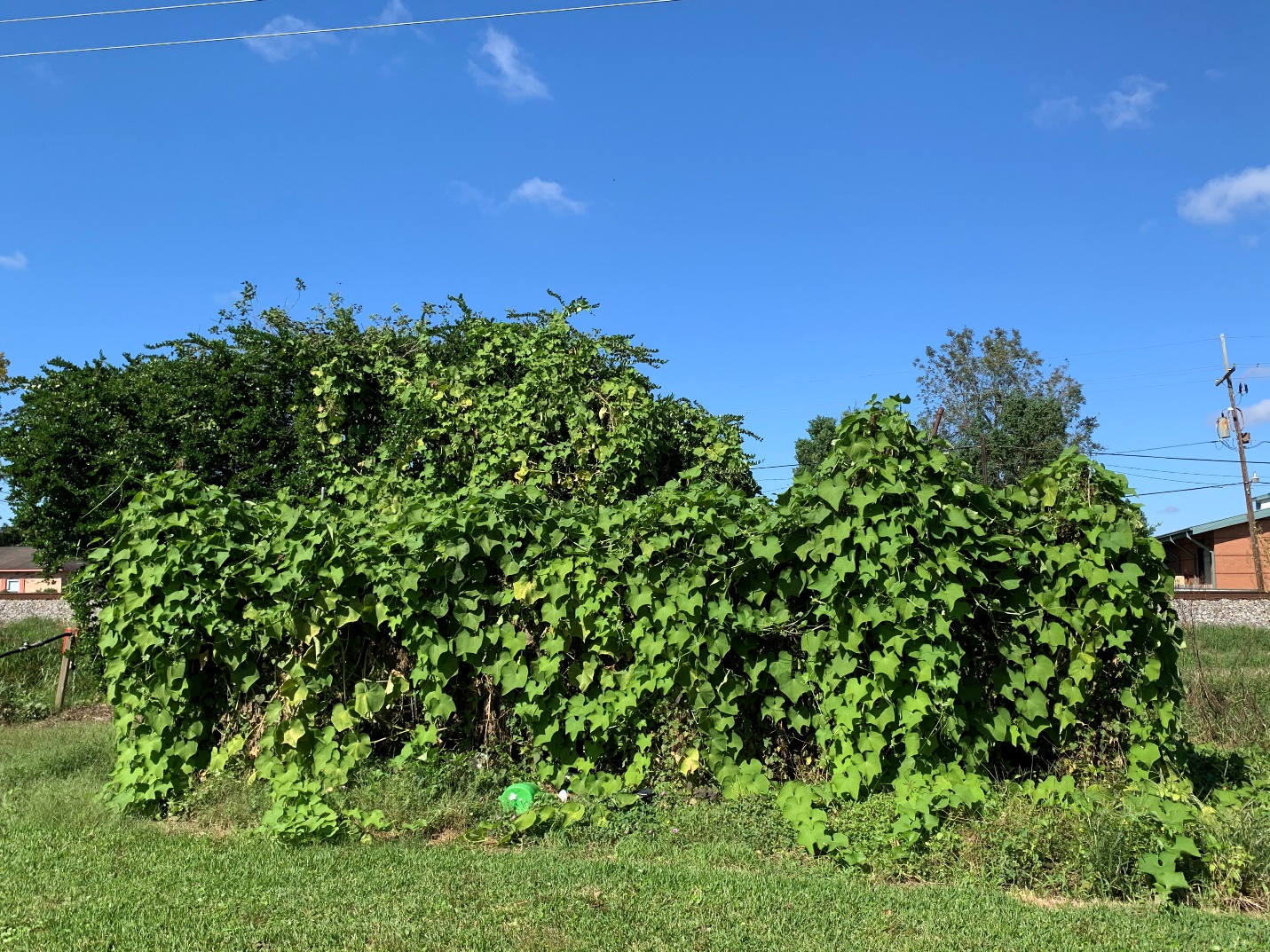
Figure 6 Full Vine.

Figure 7 Earl Perque with his mirliton vine in background.
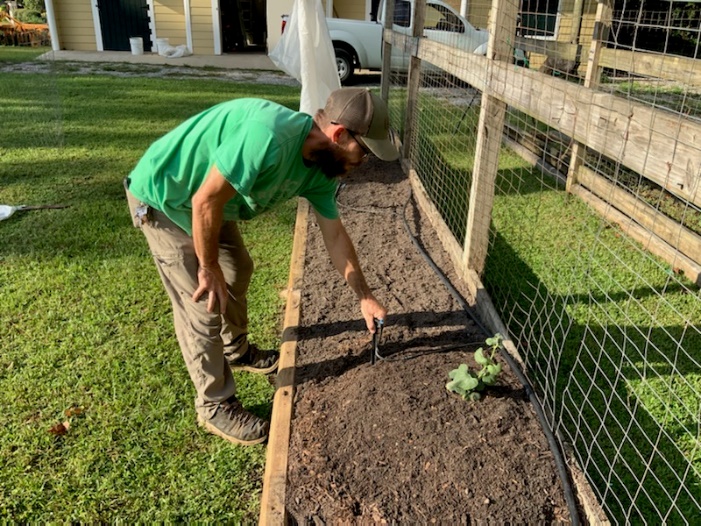
by David Hubbell | Sep 26, 2020 | Mirliton
Update on the Ishreal Thibodeaux White Mirliton Preservation Project – August/September 2020
By David J. Hubbell
Background:
On June 20th, 2020, Mirliton.org announced the we were kicking off the Ishreal Thibodeaux White Mirliton Preservation Project in an attempt to bring back, from the brink of extinction, this rare ivory white variety of the mirliton grown and cared for over four decades by Opelousas, Louisiana’s Ishreal Thibodeaux. If you haven’t already check out the Update on the Ishreal Thibodeaux White Mirliton Preservation Project – July 2020 please do so here: https://www.mirliton.org/2020/08/10/update-on-the-ishreal-thibodeaux-white-mirliton-preservation-project-july-2020/ . It contains an in depth look at all of our growers and efforts for the start of the project.
Reports from the Field:
The month of August was basically one in which the growers were nurturing their potted mirlitons to encourage growth and good root development as well as protect against the summer elements…including hurricanes! In addition, the two Louisiana growers with vines in the ground also worked to protect these so that they could thrive despite the aforementioned elements. September was our anticipated month to have the mirlitons in the ground to shoot for a small fall crop.
First off, it was good to hear that our Carolina growers fared well with Hurricane Isaias.
Chris Smith’s sprouts in Ashville, North Carolina were coming along nicely in early August and was hoping to be on course for the September planting. However, he noted on September 23rd, the mirliton were still “alive but small and still in containers. We’ve hit a low of 40F here already so I’m taking precautions. I’ve taken a cutting and sent it to a heated greenhouse in Charlotte where it should overwinter quite happily. I’ll keep mine in containers and move them inside as well as taking extra cuttings as the vines grow. The ‘season’ here is to grow early in spring, set out in summer and harvest in fall. Hopefully we’ll see that pattern in 2021…”

Image 1. The first of two potted mirliton Chris Smith and his group are nurturing.

Image 2. The second of Chris’ two potted mirliton. This one was just starting to sprout.
At the end of August, Keith Mearns plants were also doing great in Columbia, South Carolina. He reports “Both my plants are doing well. One started later than the other and is about 12” long. The large one is now beginning to branch from lower buds. “
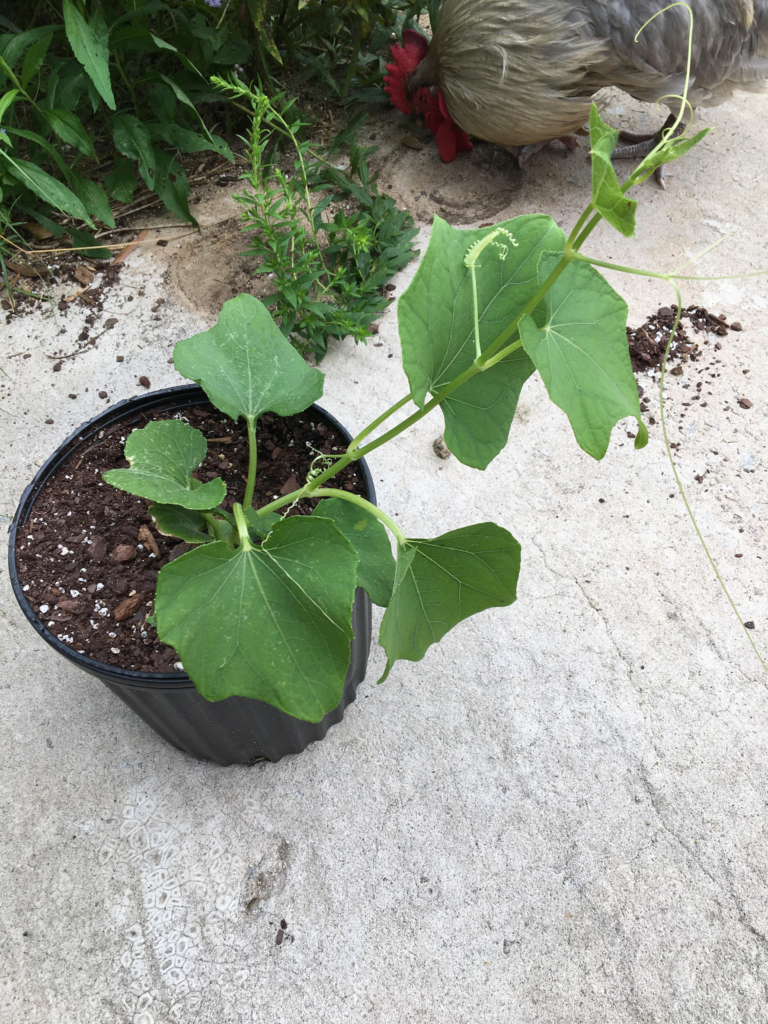
Image 3. The first of two potted mirliton Keith Mearn’s and his rooster are nurturing.
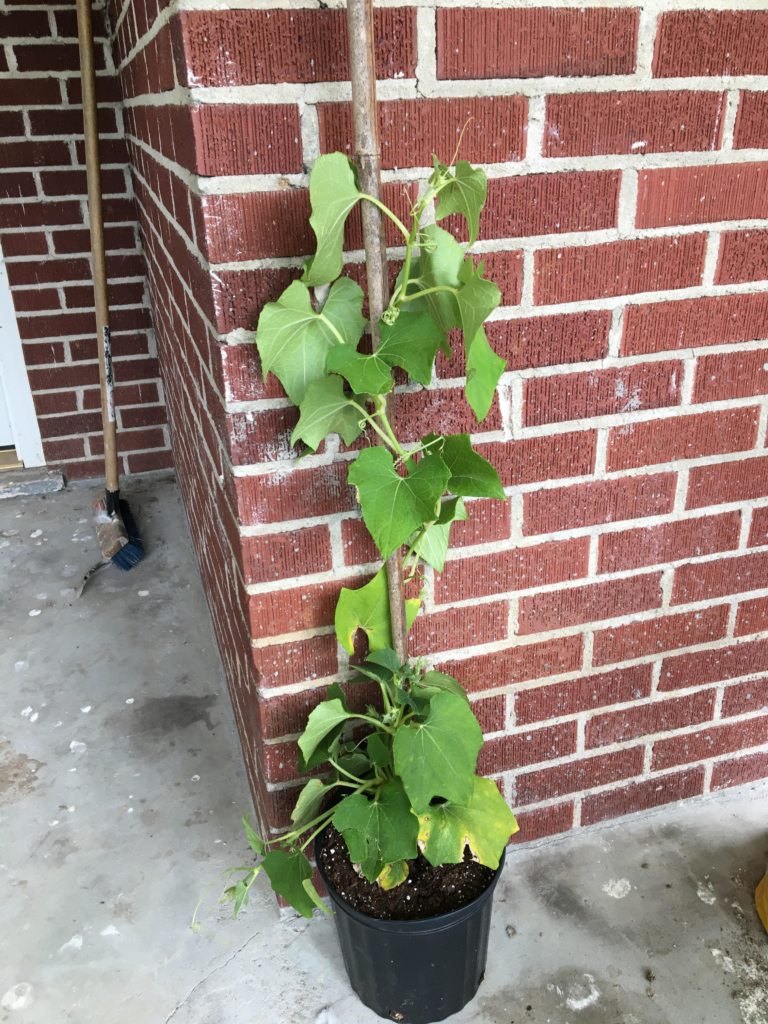 Image 4. The second of Keith’s two potted mirliton. This one is doing well!
Image 4. The second of Keith’s two potted mirliton. This one is doing well!
Keith reported the following on September 16th, “In anticipation of some decent rain, I planted one of my plants today on one of the trellises I sent photos of. I’m thinking that I’m going to up-pot the other plant into a 15gal pot and keep it in my heated cold frame greenhouse. I’ve also just stuck a few cuttings to see how they do.”
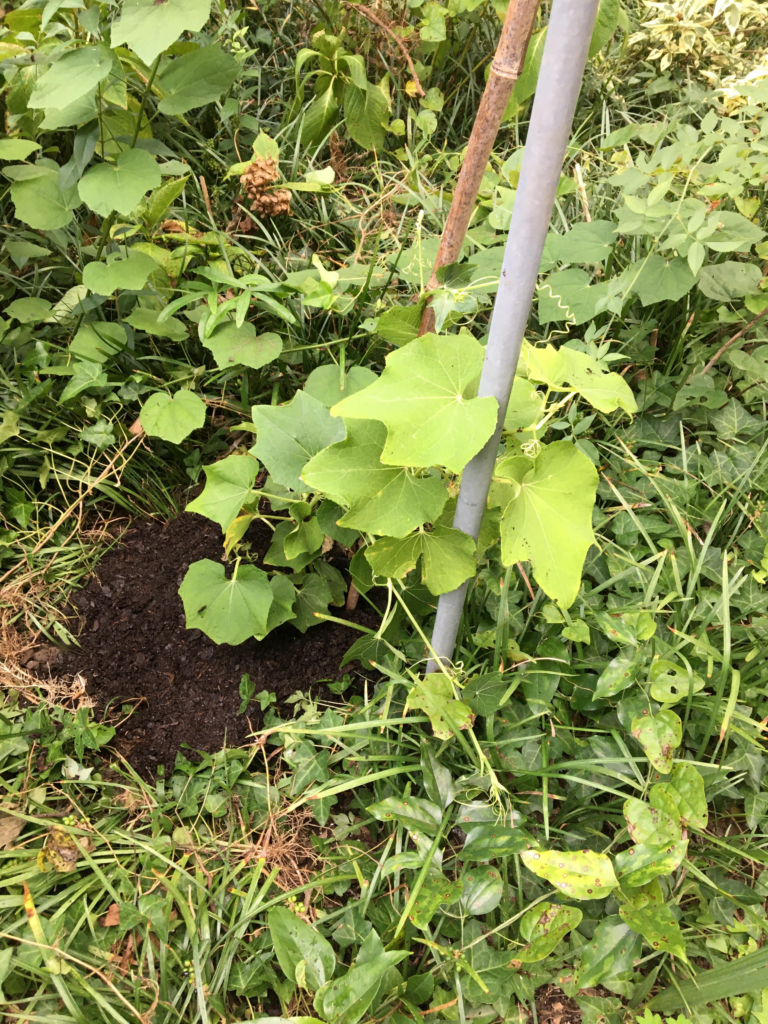 Image 5. Keith’s planted mirliton.
Image 5. Keith’s planted mirliton.
James Cobb’s vines in Houma were really thriving at the beginning of August and he states this one is in a “10 gallon nursery pot and the top of the cage is 6′. Tallest plant is now at the 4′ ring or about 3-1/4′ above the soil. The fruit on that one is still very firm. The other fruit basically rotted but the plant itself is doing well, but not as tall as the other, but does have a couple of new shoots coming up from the bottom.”
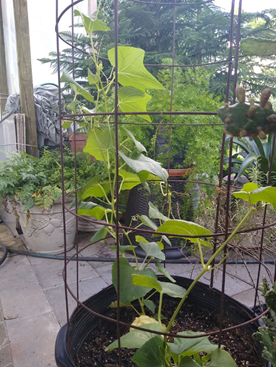
Image 6. James’ potted mirliton doing well in early August.
Then our Louisiana growers had to deal with a double whammy the last week of August: Marco and Laura. While Marco seemed a relative non-event to some, Laura did some major damage to the west side of the state. One of the Ishreal Thibodeaux growers not in the first group of official growers unfortunately lost hers during Laura.
In an effort to protect his plant, James lashed himself to the plant during the storm as seen here. 😉 In reality he was showing the incredible growth his vine had seen in a three-week period.
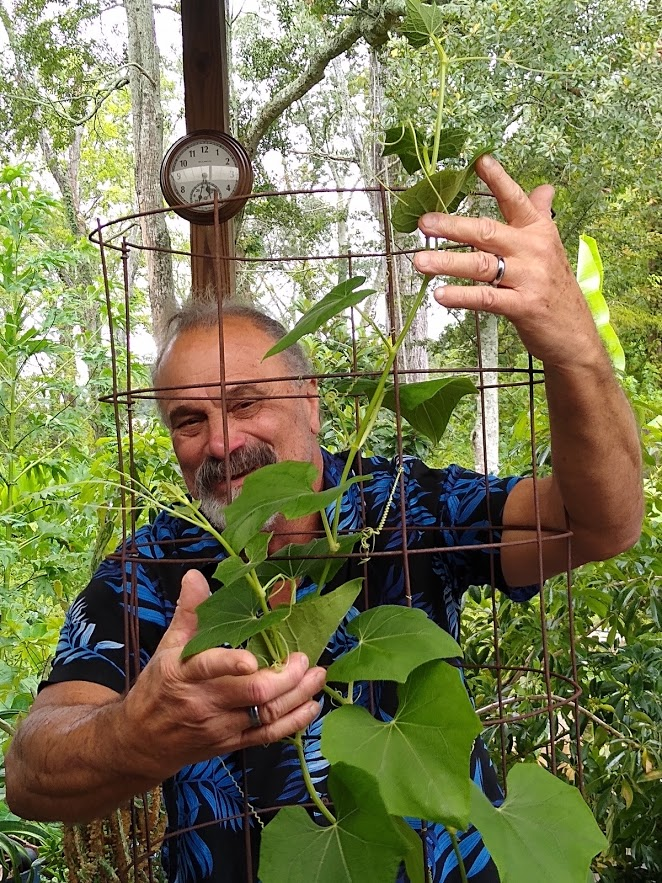
Image 7. James’ “lashing” himself to the potted mirliton before the arrival of Laura.
Luckily for us, Paul D’Anna and Chef John Folse didn’t see any damage on their ends from the storms.
Chef John, shared these updates early in August on his plants in the pots that were also looking fantastic.
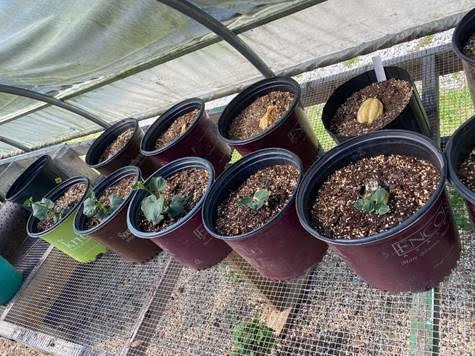
Image 8. John Folse’s potted mirlitons in his greenhouse in Baton Rouge.
By September 6th, Chef John and his Gardener Brian Ainsworth had planted a few more Ishreal Thibodeaux’s at White Oak Estates and Gardens.
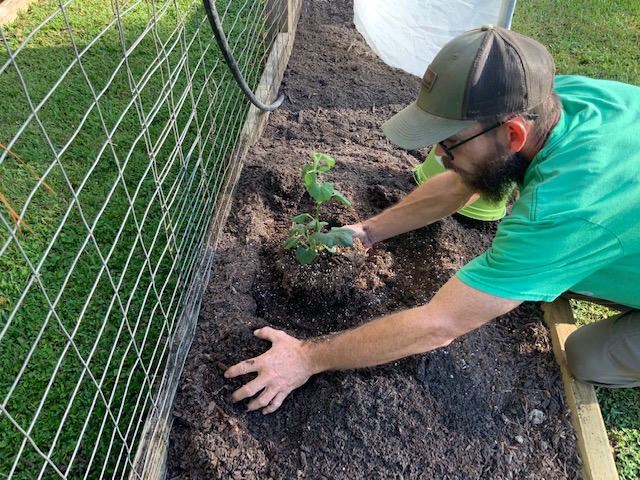
Image 9. Brian Ainsworth planting more mirlitons at White Oak Estates and Gardens in Baton Rouge.
The newly planted mirliton from earlier in the summer were also doing quite well on September 22nd in Baton Rouge.
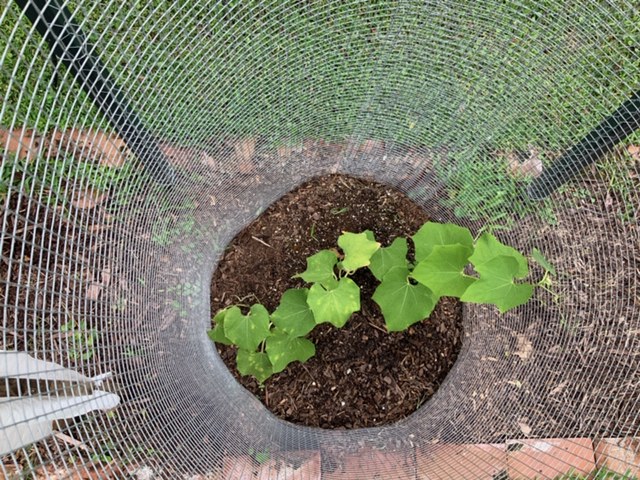
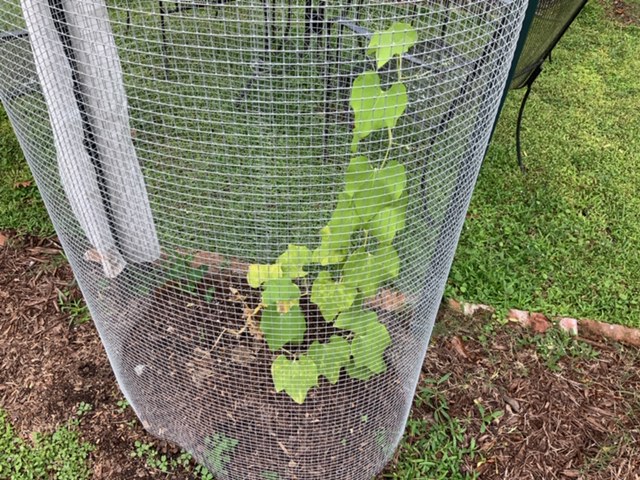
Image 10. The Ishreal Thibodeaux mirlitons planted earlier this summer at White Oak Estates & Gardens.
From my end, my seed mirliton started to drop the “embryo”, and while I expected to see sprouting, none occurred. Lance Hill noted that “The tendency for spring mirlitons to not sprout was first identified by Ervin Crawford. This is a little-understood quality called “parthenocarpy”: a fruit that sets and grows but does not contain a fertilized seed “embryo”). There is almost nothing in the literature on this but it means we best wait for fruit to sprout before we give them out as seed.
I assumed that it was a fluke, but I just read that some plants deliberately produce parthenocarpic fruit to distract herbivores. Animals prefer fruit that has not sprouted because sprouted fruit is filled with roots that consume moisture. “
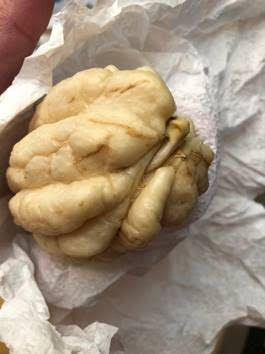
Image 11. David Hubbell’s seed mirliton not doing so well in early August.
Since mine wasn’t looking too great, I received one of the extra potted vines from Chef John to plant in Mobile by the first week of October.
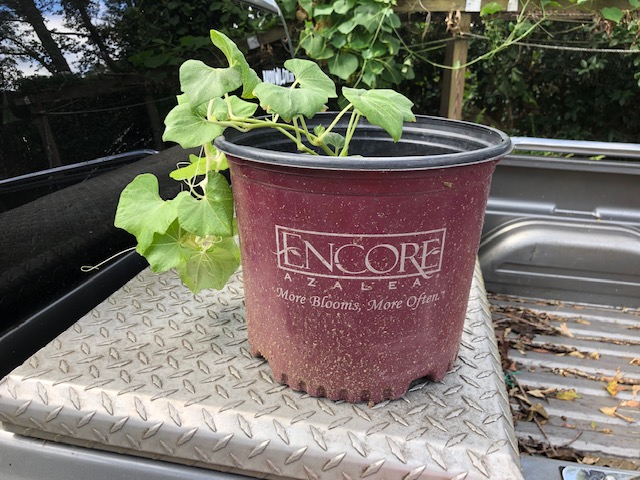
Image 12. Potted vine to be planted in Mobile.
Education and Inspiration Through Food:
Chef John and I had planned to do some more videos in August, but unfortunately the dual hurricanes caused us to delay this effort. However, a friend of mine, Jaime Callahan of Buddy’s Cajun Spice did release his Cajun Stuffed Mirleton Slipper recipe on Youtube that looks pretty good. Please check it out:

Image 13. Jaime Callahan’s Cajun Stuffed Mirelton Slippers https://youtu.be/6Goqi8ncJMM
Closing Thoughts for Effort So Far:
This second update hopefully showcased the efforts needed to nurture and protect potted mirlitons against the elements for a Fall planting. As I write this in late September, we know that the heat and humidity are just starting to let up along the Gulf Coast. Hopefully the next report will detail further updates and showcase more of the planted efforts of the various growers as the vines adjust being in the soil and focus on hopefully what will be a successful but possibly small first crop.
If you have any comments, questions, or suggestions, please send them to me David J. Hubbell at rpcajun2r@gmail.com. Thank you.



















 Image 5. Keith’s planted mirliton.
Image 5. Keith’s planted mirliton. 








Recent Comments